Prototype profile: Affordable and customisable remote-controlled microscope
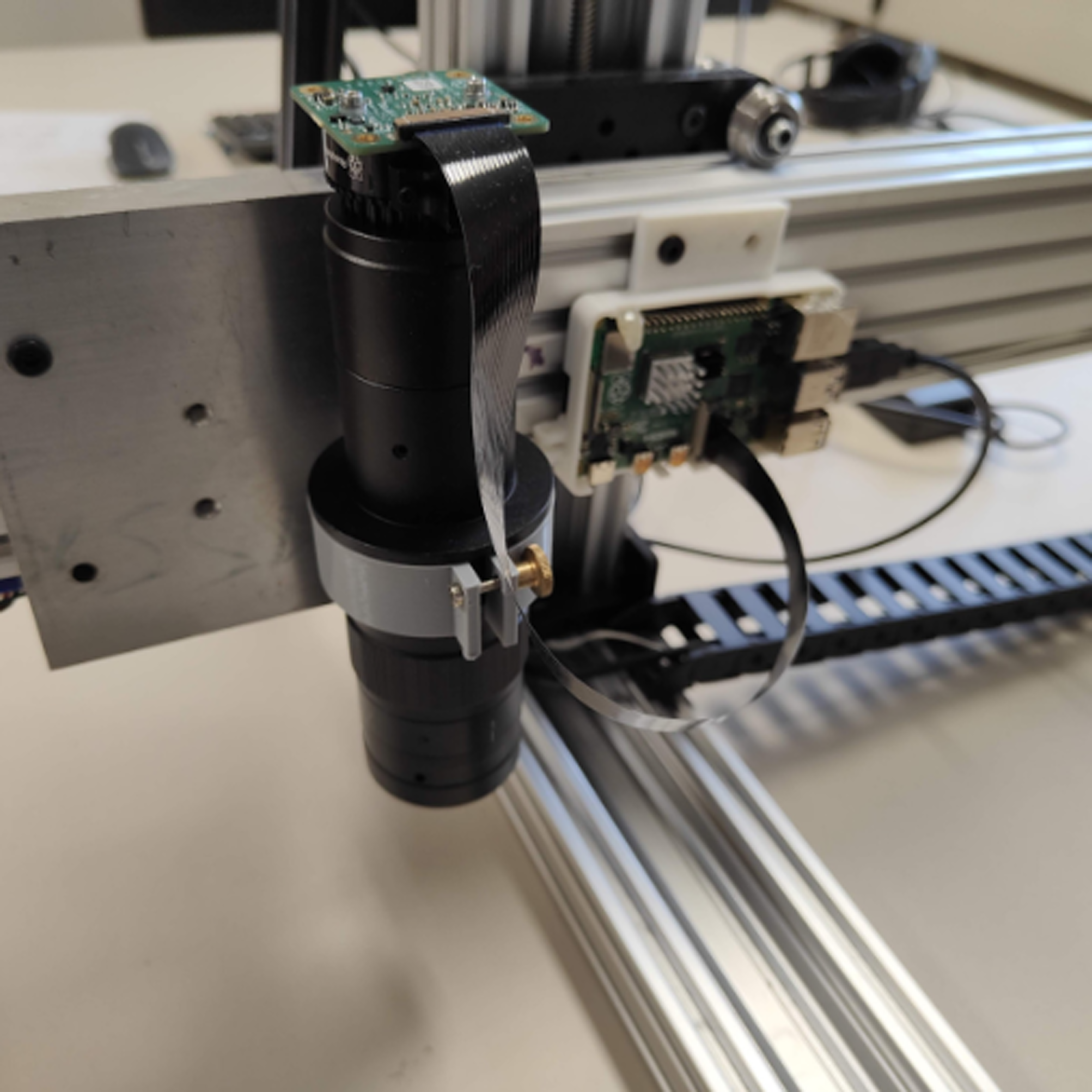
Digital microscopes are often a useful tool to have in a laboratory.
However, commercially available microscopes are usually either cheap and low quality, or extremely expensive.
The present prototype was designed to provide a middle-ground, offering a remotely controlled microscope of decent quality, at a price well below 500 CHF.
A custom board hosts the drivers and the microcontroller that controls the movement (up to 4 axes). A Raspberry Pi high-quality camera, readout using a Raspberry Pi 4 hosts the web interface and takes care of the image processing.
Prototyping profile: Calibration setup for gamma-ray detectors
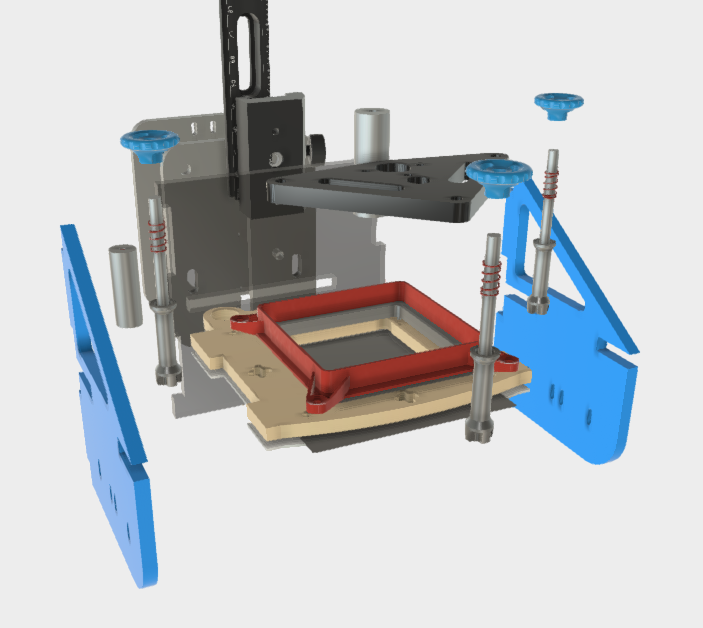
This setup measures the propagation-angle of gamma-rays from a radioactive source. Mounted on a movable X/Y table, it will be used for the calibration and characterisation of Terapet's gamma-detectors.
The part has been designed from relatively thick laser-cut acrylic sheets. This construction provides better accuracy and robustness compared to a previous design printed from PLA.
Prototype by Michael Betz (Terapet detector development)
Prototyping profile: Alignment mechanism for ATLAS/CMS

Installed inside the shielding of two of the largest experiments at the Large Hadron Collider, ATLAS and CMS there are special collimators known as the Target Absorbers (TAS).
This equipment needs to be adjusted manually each time the detector opens. In addition to this, the TAS has been modified over the years, meaning that the alignment procedure does not match the procedure that was originally envisaged.
Offering students hands-on skills in hardware and software around the domain of health at the 4th EPS TIG Hands-on Event for Science, Technology and Interfaces
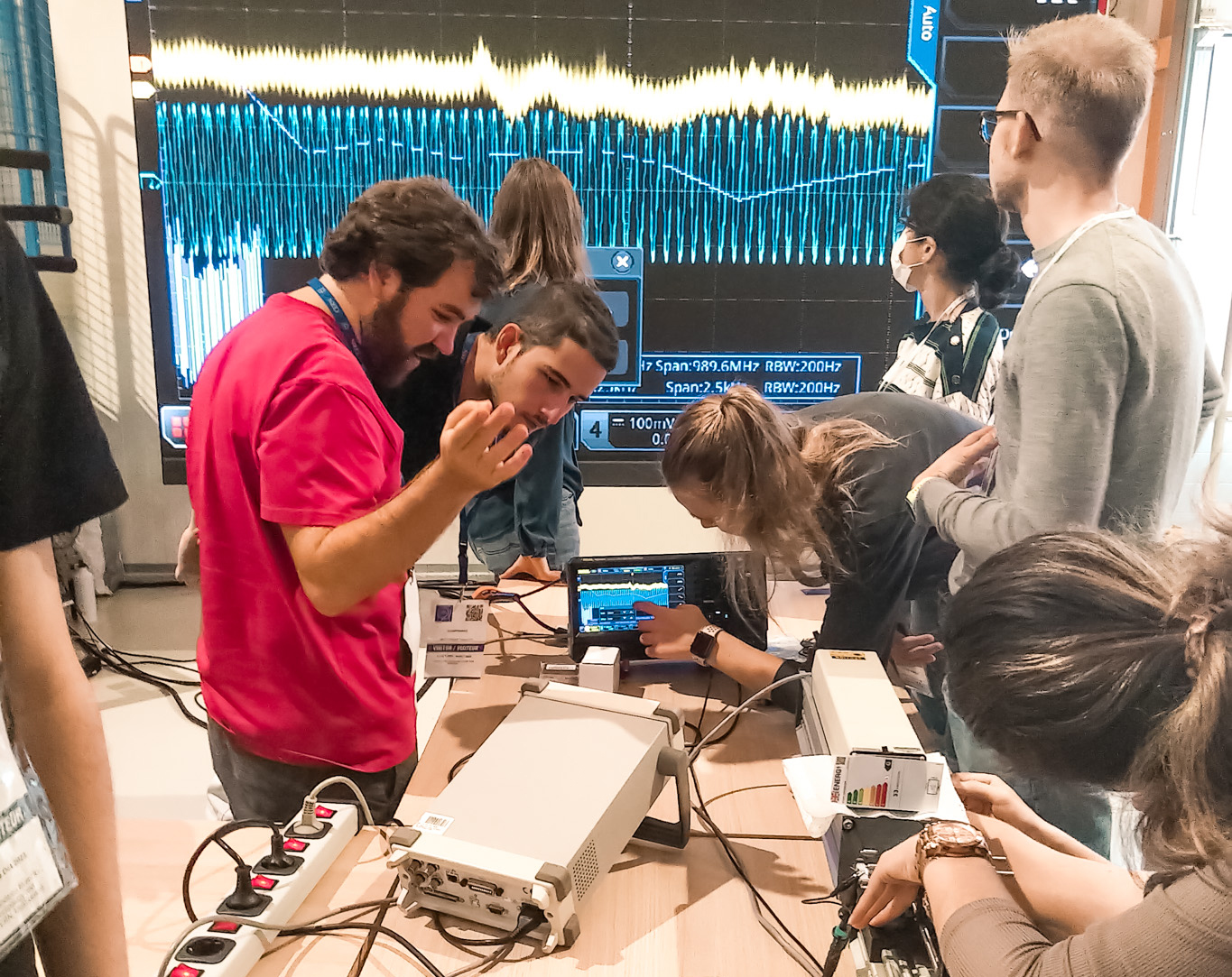
Experiments necessitate many hard skills, such as physical understanding of the process, but also a bundle of other skills like know-how in instrumentation, hard- and software and strong teamwork capabilities.
It is to give these skills to students –classically difficult to obtain during studies– that the 4th European Physical Society Technology and Innovation Group's (TIG) Maker Event for Science, Technology and Interfaces was held at IdeaSquare.
Prototype profile: Advanced Heat Exchange Devices (AHEAD)
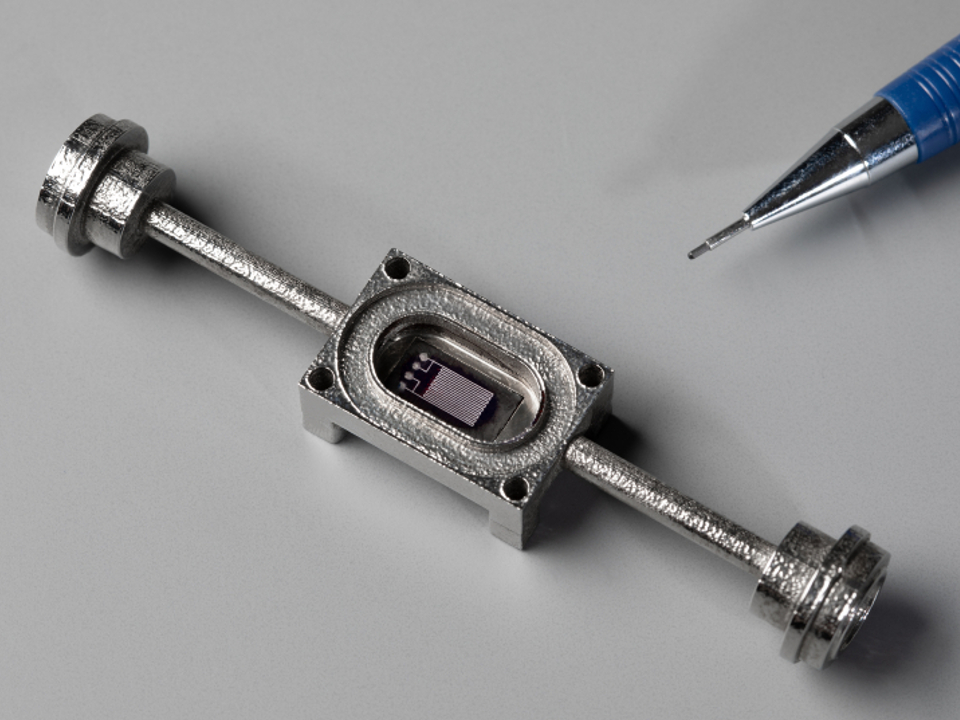
ATTARCT Phase 1 (2019-2020)
SWaP project: 3D printed metal pipe featuring pressure fittings, electrical feedthrough, and embedded 3D printed sensor Features:
- Pipe & segments: 3D printed via Selective Laser Melting (SLM)
- Sensor: 3D printed via Aerosol Jet Printing (AJP)
- Sensing: fluidic temperature
- Data transmission: wired
Prototype profile: Liquid Sample Dispensing System for β-NMR Studies in Vacuum
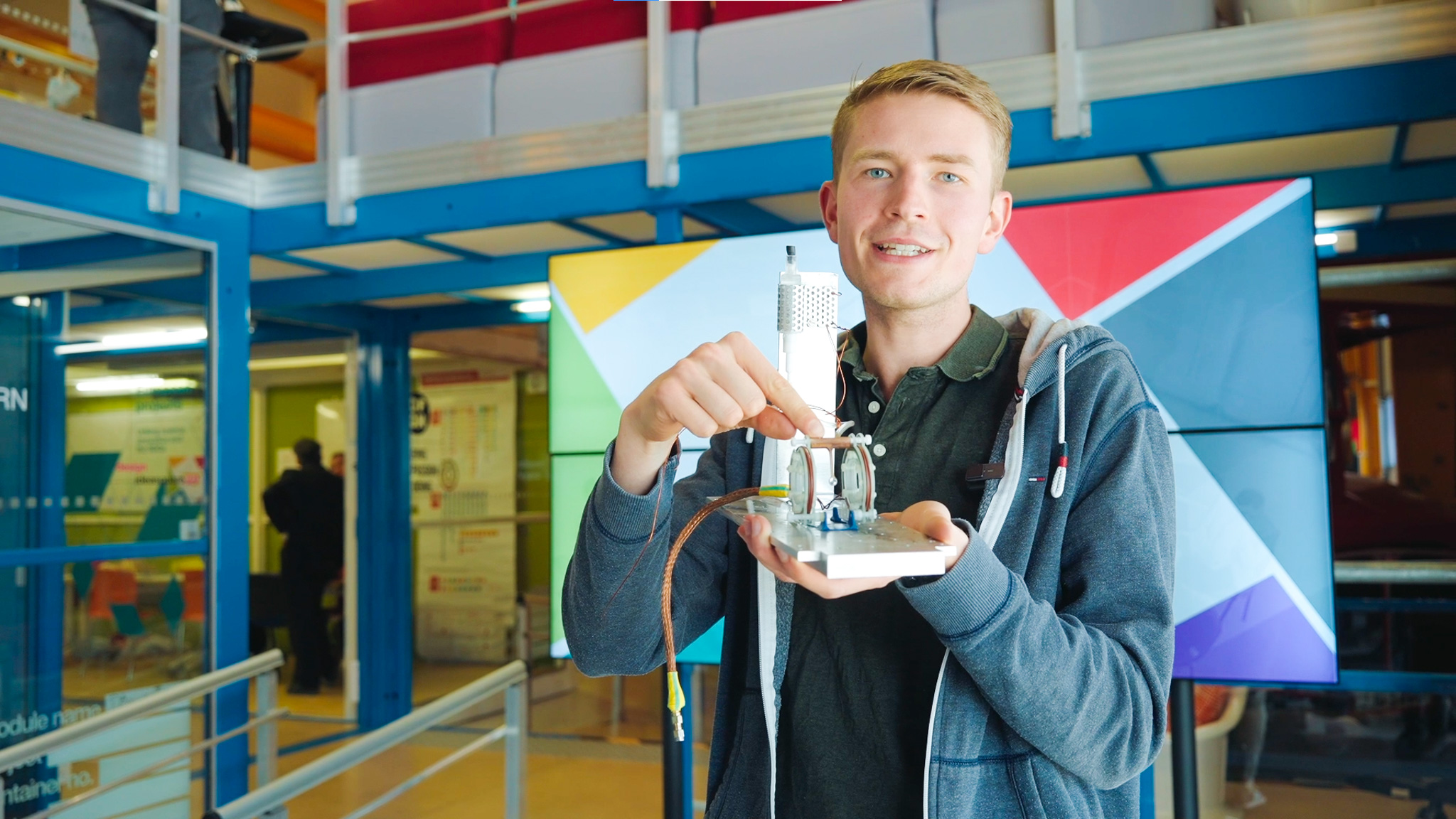
β-NMR has proven its capabilities and advantages in the world of nuclear spectroscopy: Not only does it open the door to high precision measurements of nuclear properties, but it also facilitates investigations of unstable, short-lived isotopes, otherwise inaccessible to conventional NMR. Additionally, β-NMR allows for real-time observations of chemical processes, such as biomolecular folding mechanisms.
Prototype profile: CLEAR-Robot (C-Robot)

The C-Robot is a robotic system that was designed and built by 3 members of the CLEAR team (CERN Linear Electron Accelerator for Research). It was first designed to easily irradiate samples for medical applications. The robot is made of 3 linear stages for X,Y and Z axis, 6 limit switches (2 for each axis), a 3D printed grabber, a mounted-camera system with a moving filter and two tanks (one storage tank and one tank placed in the electron beam).
Prototype profile: 3D-printed polystyrene-based plastic scintillator
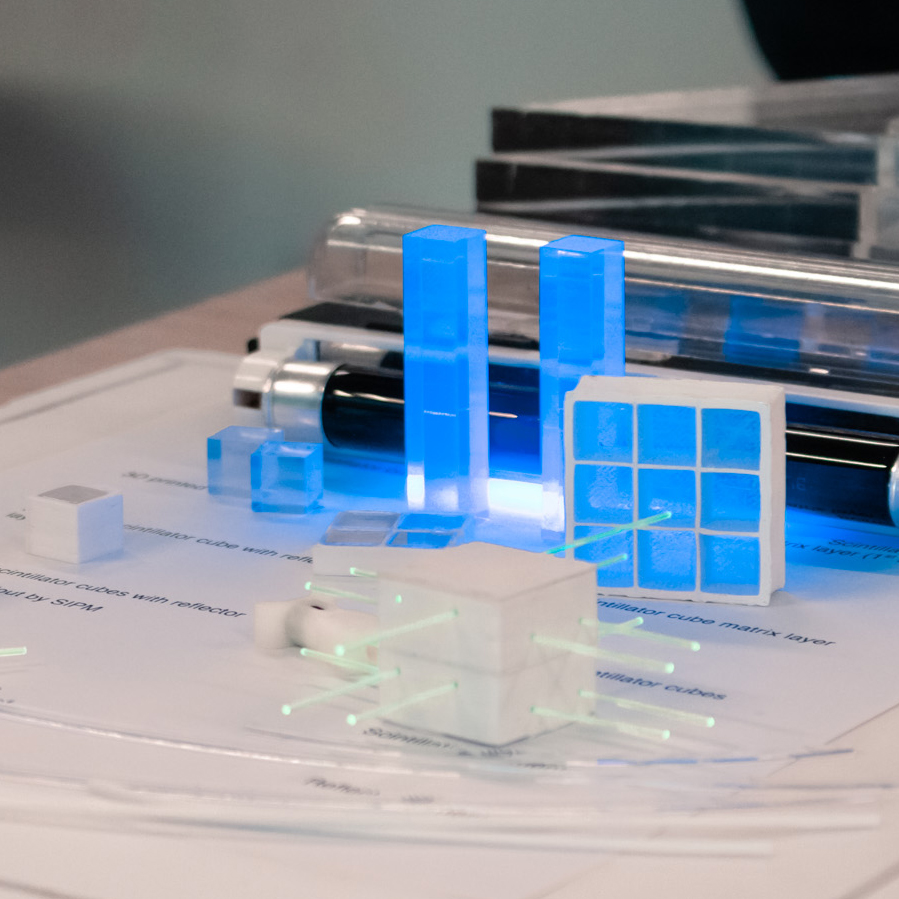
The "3D printed Detector" (3DET) collaboration is investigating and developing additive manufacturing as a new production technique for the future scintillator particle detectors with performances comparable to the state of the art.
Prototype profile: ATLAS Phase II Screwholder
Prototyping makes up one of the key pillars of IdeaSquare. A recent prototype, started in March 2023, aims to make a screwholder for the ATLAS Phase II Upgrade on MDT detectors.
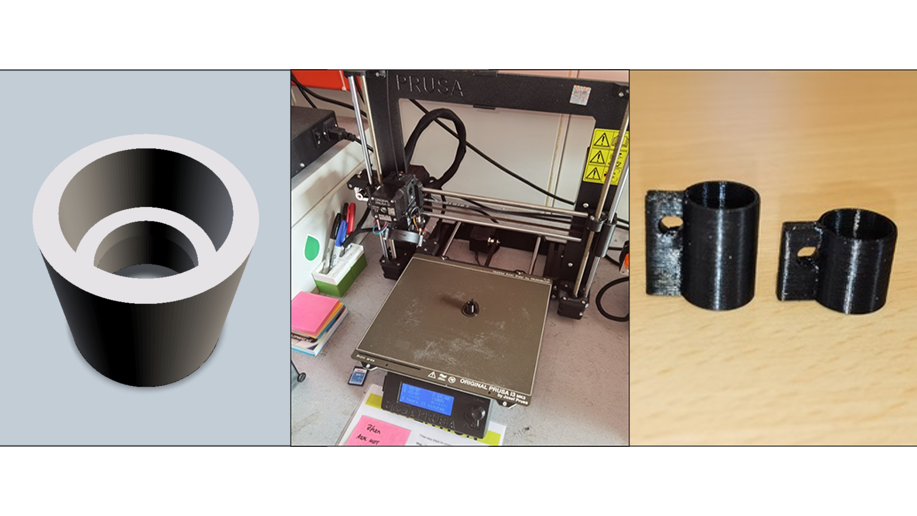 Prototyping makes up one of the key pillars of IdeaSquare. A recent prototype, started in March 2023, aims to make a screwholder for the ATLAS Phase II Upgrade on MDT detectors.
Prototyping makes up one of the key pillars of IdeaSquare. A recent prototype, started in March 2023, aims to make a screwholder for the ATLAS Phase II Upgrade on MDT detectors.
Prototype profile: Adjustable Height Table for Wire Bonding
Prototyping makes up one of the key pillars of IdeaSquare. A recent prototype, started in March 2023, is in collaboration with the experimental physics department and BONDLab.
 Prototyping makes up one of the key pillars of IdeaSquare. A recent prototype, started in March 2023, is in collaboration with the experimental physics department and BONDLab.
Prototyping makes up one of the key pillars of IdeaSquare. A recent prototype, started in March 2023, is in collaboration with the experimental physics department and BONDLab.
Pagination
- Previous page
- Page 3
- Next page